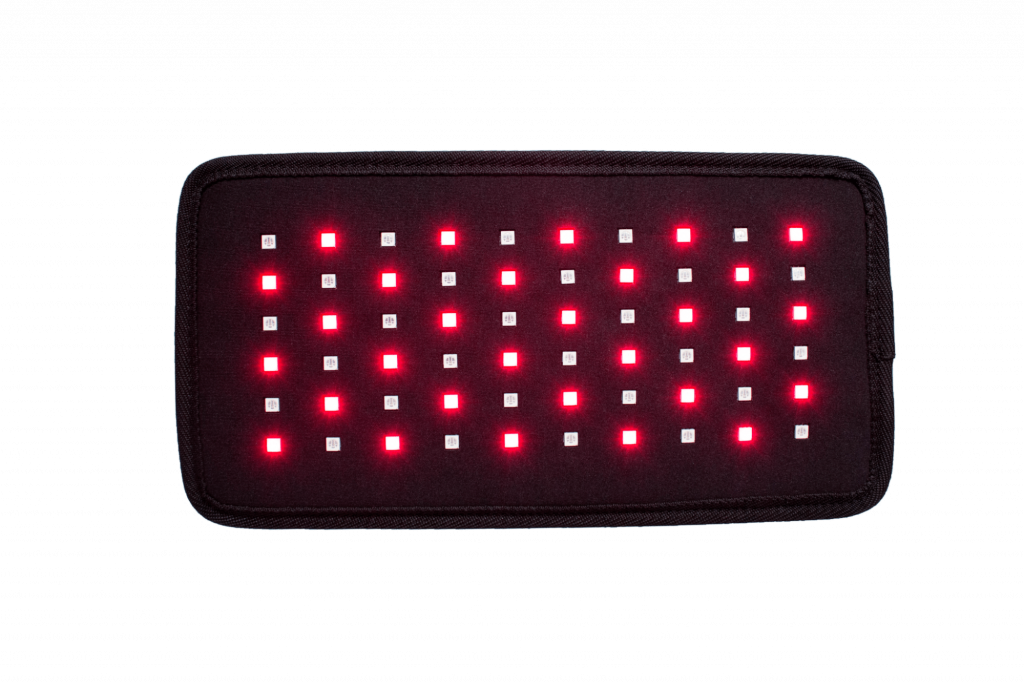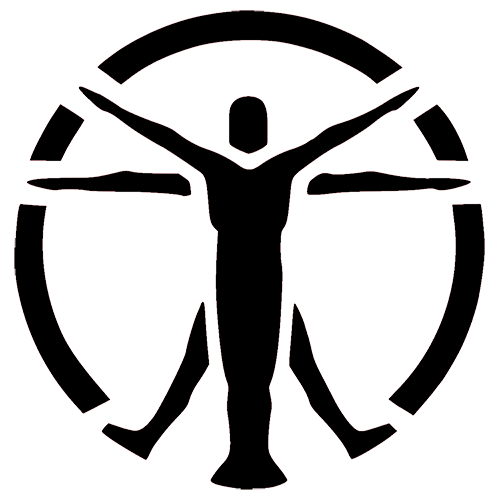The human body is a complex machine, and the processes that take place in it can sometimes be difficult to understand. Especially when you’re trying to figure out how our brains function — as well as all of its other parts like nerves or nerve plexuses for example.
The nervous system is an intricate and complex network that governs nearly every process in the body, includifromoordination of movements between muscles or inhibition to prevent them from contracting when needed. It also has a huge impact on our day-to-day life activities like kicking off your shoes at work before sitting down for lunch with colleagues – even how warm you feel during winter versus summer months can depend upon what’s going through these nerve fibers.
With neuropathy, the damaged nerve cannot perform its functions. In simple terms, organs and limbs lose contact with the brain causing disturbances in our bodies
Home remedies without medication may be one option, such as red and infrared light therapy.
In this article, we will look at a condition called neuropathy, its features, treatment with red and infrared therapy, supported by many scientific studies and devices that are available for home light therapy.
DPL Flex Pad
DPL Slipper
DPL Flex Mitt
What is neuropathy?
The work of the organs and systems in our body is regulated by nerve impulses. These signals are sent as if they were being transmitted wirelessly, traveling down nerves until they reach their destination at which point damage can take place to cells or tissues with serious consequences for overall health including an interruption in cellular nutrition due to lack of oxygen supply from blood vessels not getting enough nourishment because it’s blocked off somehow.
Symptoms of neuropathy can include a tingling sensation in the affected area, numbness, or decreased sensitivity. Another sign is if you have trouble moving your limb(s) when it’s cold (for example weakness when clenching).
A damaged nerve will cause the muscle to lose its ability to contract normally. Sensitivity decreases, symptoms appear and can be treated with medication or surgery.

Risk factors for neuropathy
Neuropathy is a condition that causes nerve damage and pain. The three most common causes of neuropathy are diabetes mellitus, intoxication or injury to the foot as well as various other injuries such as burns on your skin for example!
- With peripheral neuropathy, the nerves responsible for transmitting impulses in the limbs are affected, so there is a feeling of numbness and their sensitivity to pain.
- With proximal neuropathy, people often experience similar symptoms in the thighs, buttocks and legs.
- With autonomic neuropathy, the functions of internal organs are disrupted, and the digestive system suffers.
In some cases, neuropathy can be caused by alcohol or medicines. Arsenic is also a culprit in toxic forms of the condition and these types mainly affect nerve cells near one’s wrists while they’re crossed on their hands; those symptoms might not show up until much later because it takes longer for signs/symptoms to develop than other kinds do (symptoms such as numbness).
The painful neuropathy is a consequence of compression on the nerves after fractures, improper scar formation and injury by neoplasm. Because it interferes with daily activities patients often seek an easy-to-use home device that can relieve their pain without side effects like light therapy does for them because this type not only treats symptoms but also improves quality life in general condition which gets better as time goes by thanks to its natural healing properties.
How does light therapy help neuropathy?
Light therapy has been proven to be the fastest-growing new treatment for peripheral neuropathy, and red light is one of many types that works. Red Lights penetrate 2-7 centimeters into your skin using infrared light which targets muscles, nerves and bones effectively without damaging it.
As we all know: wavelengths 600 -1000 nm are ideal when treating inflammatory processes like painful diabetic symptoms or even just general muscle soreness after exercise because they don’t heat up as much so there’s less risk of discomfort caused by heating applications.

The penetration ability of red and infrared light is what makes LLLT so effective. It penetrates deep into your skin, where it is absorbed by photoreceptors in the cells that create metabolic events within them – leading to natural processes being activated as well. The key here is nitric oxide: our bodies’ favorite gas because not only does this powerful signaling molecule relax nerves but regulates blood pressure too while preventing platelets from clumping together (not good if you want an easy-to with those pesky bruises).
Infrared light therapy triggers the release of nitric oxide, which increases blood flow, delivers oxygenated nutrients and pain relievers to your tissues and nerves.
The effectiveness of light therapy in treating neuropathy based on clinical trials
Damage to the central or peripheral nervous system can cause neuropathic pain, which is often treated with low-level laser therapy (LLLT).
The following studies provide evidence of the efficacy of light therapy in neuropathy.
A large-scale study [1] was conducted on 2239 patients with established peripheral neuropathy, who had pain and numbness in each leg. The treatment for this condition is infrared light therapy that lasts 60 days; as a result of the treatment – 67% fewer areas where there’s loss or decreased sense such things can happen across both feet on average.
The use of light therapy is associated with a significant clinical improvement in foot sensitivity, as well as an overall decrease among patients’ neuropathic pain.
The next study [2] found that 40 patients with painful diabetic peripheral neuropathy who were not responsive to treatment had reduced pain levels in 12 weeks. Light therapy was more effective at relieving their symptoms, but some improvement was seen from using a simulator as well. The serum IL-6 index also decreased after intervention which shows the impact these kinds of treatments have on inflammation and overall quality of life for those living with chronic illnesses like diabetes.

This study [3] was done on 70 patients with chemotherapy-induced peripheral neuropathy following cancer cure. Treatment consisted of 30 minutes sessions 3 times a week for 6 weeks using either light therapy or sham device, and it resulted in significant improvements at the end when compared to those who did not receive any treatment: reduced pain and increased sensitivity overall.
The last study [4] included 41 patients, including 18 men and 23 women. Of these 10 (24%) had type 1 diabetes mellitus which is accompanied by pain in their feet as well lack sensitivity to touch or pressure; this is characteristic of neuropathy. In both groups, there was an increase of 24%. All participants who received light therapy showed improvement early on while those receiving radiation did not see any change until 6 weeks after treatment ended where they noticed a decrease from baseline levels – a significant difference.
Top 5 light therapy devices for neuropathy treatment
Red and infrared light therapy are two of the fastest-growing new treatments for neuropathy. You can use it to treat your painful symptoms whenever you need them – at home or on vacation, without ever having a doctor’s appointment.
Below are the best devices to help you with your treatment.
reVive light therapy
ReVive Light Therapy, a portable infrared light therapy method for pain relief from the comfort of your home.
In 2008, the FDA-approved DPL system was introduced by ReViveLightTech as an alternative treatment option to help those suffering from minor joint and muscle discomfort or stiffness; it also helps increase local blood circulation which can be beneficial in some cases where there is neuropathy present (such as arthritis).
The company introduces the following devices for the treatment of neuropathy:
DPL Flex Pad

The DPL Flex Pad is a flexible, pad-like device with therapeutic infrared light that penetrates deep into painful muscles. This easy to use therapy system uses DPL (Deep Penetrating Light) technology and can provide relief from soreness by improving circulation or relaxing stiff muscles great for those who suffer from neuropathy pain too.
The area contains 60 lights, which include LEDs in the infrared (880 nm) and red spectrum.
DPL Flex Pad is a great way to get the job done. You can use it hands free and easily secure in place with its included velcro strap. The battery lasts for 30 minutes before needing another charge, so don’t worry about constantly being interrupted during treatment time- there are no interruptions here; 20 minutes should give you everything your skin needs.
DPL Slipper

The DPL foot pain relief slippers use medical-grade red and infrared LEDs to help heal your tired feet. 880 nm of radiation penetrates deep into muscles, promoting better circulation while removing toxins from the body; this helps with healing as well! The recommended treatment time is between 14-25 minutes in order for you to notice optimal results – which means these fantastic slippers will be worth their weight in gold when suffering through those long days on our feet at work or school.
DPL Flex Mitt

The Flex Mitt is a therapeutic arm device that delivers red (660 nm) and near-infrared light energy deep into the tissue of your arms, which relieves pain. This flexible sleeve can be used for all types of aches from arthritis to carpal tunnel syndrome with 20 minutes worth of treatment time each day.
Flexmitt has been clinically proven by doctors all over North America to offer effective relief from both localized areas’ discomfort caused by injury such as carpal tunnel syndrome while also providing generalized benefits on any muscle sprain due to repetitive stress injuries like tennis elbow.
Hooga light therapy

If you are looking for the strongest results, there is no better option than Hooga Light Therapy. Designed with a medical red (660 nm) and near-infrared 850 nm device that can provide affordable light therapy in your home to relieve pain as well restore sensitivity of parts of the body which may need it most – such as neuropathy symptoms.
Their panels come in a variety of sizes ranging from 14 LEDs to 300 LED. The devices are not as compact, but where portability is lacking they compensate by having more power than other less powerful ones that take about 20 minutes per session; you can do the same thing with your device only taking half this amount or less time!
Nuve light therapy

Nuve is the latest and greatest in pain relief. It’s touted as being similar to what doctors, professional athletes use with 4 red LEDs (660 nm) that penetrate deeply into tissue while 56 infrared LEDs only light up nerves which provide a soothing effect on inflamed areas.
This device can be taken anywhere because it doesn’t have all those pesky wires like some other lights do; however keep in mind if you want one for travel purposes – this isn’t super portable so make sure your bag has room.
Summary
Neuropathy is a generic term for diseases that cause problems with the peripheral nervous system. That is, we are talking about pathologies in which nerves extending from our brain and spinal cord control how messages move outwards towards all parts of us – including what feels like feeling pain.
Light therapy is one of the fastest-growing new treatments for peripheral neuropathy. Through red and infrared light, therapies are able to penetrate deeply into the skin with their ability to enhance blood flow as well deliver oxygen nutrients like pain relievers where necessary – all while delivering some much-needed brightness that helps brighten up your day! When choosing home units there are two options: either small handheld devices which work great if you’re always on the go; or larger machines perfect if time allows us to sit down at least once every week in order not to have any issues when using them.
FAQ:
🔍 What are the best devices for treating neuropathy?
Depending on the area of nerve damage and our preferences, we have identified 5 devices:
- DPL Flex Pad;
- DPL Slipper;
- DPL Flex Mitt;
- Hooga light therapy;
- Nuve light therapy.
❓ Will my pain decrease?
Pain is often a sign that light therapy may be effective. While functional improvements tend to come more gradually, and can take longer than pain relief do – most patients experience this latter change first after all.
🤔 Will I need ongoing treatment?
Some doctors recommend home exercises to help you continue improving your mobility and pain. They may also advise using infrared light therapy at-home for permanent relief, as it can maintain circulation in all parts of the body while helping with inflammation that has been caused by injury or arthritis.
⭕ Why is only half of the LEDs lit? Is my device broken?
The reason you can only see half of the LEDs illuminated is that near-infrared LEDS are outside our human’s visible spectrum, so we won’t be able to see them on.
Sources
- Lawrence B. Harkless, Salvatore DeLellis, Dale H. Carnegie, Thomas J. Burke. Improved foot sensitivity and pain reduction in patients with peripheral neuropathy after treatment with monochromatic infrared photo energy—MIRE. – Journal of Diabetes and its Complications 20(2):81-87. DOI: 10.1016/j.jdiacomp.2005.06.002
- Prasun Chatterjee, Achal K. Srivastava, Deepa A. Kumar, Avinash Chakravarty, Maroof A. Khan, Akash K. Ambashtha, Vijay Kumar, Luis De Taboada, Aparajit B. Dey. Effect of deep tissue laser therapy treatment on peripheral neuropathic pain in older adults with type 2 diabetes: a pilot randomized clinical trial. – BMC Geriatr. 2019 Aug 12;19(1):218. DOI: 10.1186/s12877-019-1237-5.
- Peter A. Argenta, Karla V. Ballman, Melissa A. Geller, Linda F. Carson, Rahel Ghebre, Sally A. Mullany, Deanna G. K. Teoh, Boris J. N. Winterhoff, Colleen L. Rivard, Britt K. Erickson. The effect of photobiomodulation on chemotherapy-induced peripheral neuropathy: A randomized, sham-controlled clinical trial. – Gynecol Oncol. 2017 Jan;144(1):159-166. DOI: 10.1016/j.ygyno.2016.11.013. E-pub 2016 Nov 22.
- Tarek A. Ammar. Monochromatic Infrared Photo Energy in Diabetic Peripheral Neuropathy. Volume 2012 |Article ID 484307.


